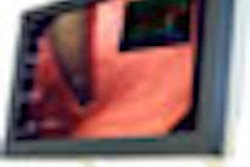Dealing with external imaging studies can be a tricky business for PACS administrators. It can take time and resources to reformat and import JPEG or even DICOM images into a local network -- time that many emergency departments don't have.
That's why a new PACS peripheral developed at Denver Health Medical Center in Colorado is so intriguing. The software creates a gateway that enables external physicians who are transferring patients to Denver Health to send images that can be directly imported into the facility's PACS network, in many cases before the patients have been admitted to the hospital. PACS administrators at the facility have found that the gateway saves valuable time, enabling them to begin treating patients more quickly.
Denver Health Medical Center is the largest of four level I trauma centers at hospitals in metropolitan Denver that serve the state of Colorado. In 2007, 1,900 of the 43,990 patients admitted to its emergency department received treatment in its 20-bed Rocky Mountain Regional Trauma Center.
In addition, Denver Health is the home of the Center for Complex Fractures and Limb Restoration, serving patients who predominantly reside in a five-state region. The center specializes in open fractures; complex acute fractures; pelvic and acetabular fractures; spine trauma; replantation of fingers, hands, and limbs; microvascular surgery and reconstruction; and severe sports injuries.
"Because there are so many types of hospitals that Denver Health's emergency department serves, we get a wide range in the severity of the injuries of patients evacuated to us," explained Deb Carpenter, trauma program manager. Injuries can vary from a simple fracture to complex poly-trauma, with causes ranging from skiing accidents to falls from horses.
The dilemma of external studies
Patients transferred to Denver Health almost invariably have images accompanying them, either on DICOM CDs that arrive with the patient or sent via a teleradiology link. Neither method is optimal, however. DICOM CDs require a staff member to manually import the images into the PACS, and they could be in a proprietary file format.
"It is not uncommon for a CD of a seriously injured patient to be accidentally left in an ambulance or helicopter, or be misplaced within our emergency department," said Vince Doyle, Denver Health’s imaging informatics manager. "If we do receive it, the CD may be unviewable because it has a proprietary format or it may be damaged."
Meanwhile, images sent via teleradiology initially are available only at a dedicated teleradiology workstation until they, too, can be imported into the PACS. Even if the studies are viewable and staff members are standing by to transfer the images, it can still take 10-15 minutes to complete the process -- valuable time lost in the emergency department setting.
In both cases, PACS administration staff must perform a number of data and quality control checks before the images could be transferred into Denver Health's PACS.
"We needed a proxy server that could receive direct DICOM transfers of encrypted studies over a virtual private network, intelligently perform exam data and quality control integrity checks, and auto-forward the exam into our PACS," Doyle said. "The data integrity checks needed to eliminate potential overlaps in patient IDs. We also needed the ability to open DICOM tags, so that modifications could be made as necessary based on DICOM tag information. And we needed the ability to add and store JPEG images in the PACS."
To address the problem, Denver Health worked with its PACS vendor (Emageon, Birmingham, AL) to develop an external gateway that performs the required data integrity and quality control checks, and also enables outside studies to be automatically integrated into a patient's electronic medical record, automatically identifying them as external images. It allows users to select specific relevant images for permanent PACS retention if only a subset of images is needed.
The gateway provides two major clinical benefits. The emergency department or the trauma center can develop a plan of care prior to the patient's arrival. ED attending physicians know what specialists to assemble, and the charge nurse can determine the number of nurses needed and reallocate resources within the emergency department as required.
While Denver Health always has a 24/7 onsite trauma surgeon and dedicated operating room for the trauma center, if it's in use, the emergency department can prepare a general operating room for the patient's arrival and call the back-up trauma surgeon.
The gateway was activated in August 2008, with nine affiliated hospitals connected. During the month of August, 110 studies were transferred directly to the gateway of the average 300 exams per month that are imported.
"Advance evaluation of diagnostic images and the ability to see the injuries of the patients has allowed us to more efficiently and cost-effectively allocate resources," Carpenter said. "We eliminate most of the guesswork." Advance access to CT images also enables 3D advanced visualization to be performed if needed for the surgeons prior to the patient's arrival.
The surgeons are impressed. "This is possibly one of the most important outreach services we have developed since I have been at Denver Health," Dr. Wade Smith, director of orthopedic surgery, told AuntMinnie.com.
Dr. Kagan Ozer, a specialist in hand and microvascular surgery, believes the gateway's second major benefit is its ability to foster increased communication with emergency physicians and surgeons at community hospitals, which can help prevent unnecessary patient transfers.
"The capability of making an accurate, remote clinical assessment in real-time discussion with our emergency physician and surgeon counterparts while viewing the patient's injuries and diagnostic images has the potential to save hundreds to thousands of dollars that an unnecessary patient transfer can cost," Ozer said. "These costs add up rapidly to staggering expenditures that can be avoided."
Denver Health has not yet begun to assess the cost savings from the gateway, but Carpenter agreed that the potential to avoid a patient evacuation and transfer is beneficial for the remote hospital, for Denver Health, for payors, and for the patient. This is one of the compelling reasons being used to market the service to Denver Health's other affiliated hospitals.
The biggest hurdle to adoption -- other than legal formalities, the establishment of a virtual private network, and associated costs -- is remembering to transmit images.
"There is a learning curve involved," Doyle said. "Our emergency team needs to remind their counterparts to send the images for the first couple of weeks. But then it becomes second nature -- and everyone involved benefits."
By Cynthia Keen
AuntMinnie.com staff writer
November 3, 2008
Related Reading
Direct image capture solves workflow challenge, July 14, 2008
Copyright © 2008 AuntMinnie.com



















